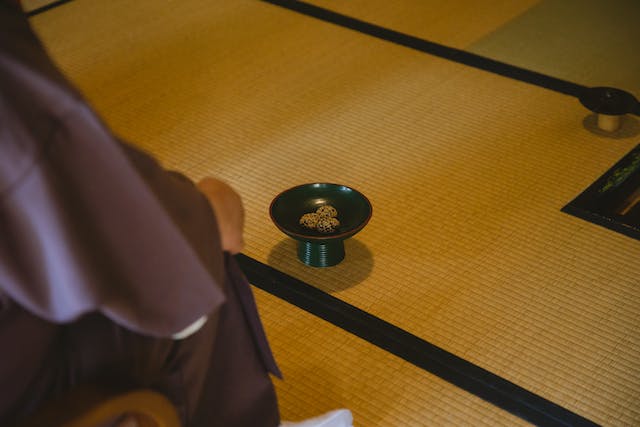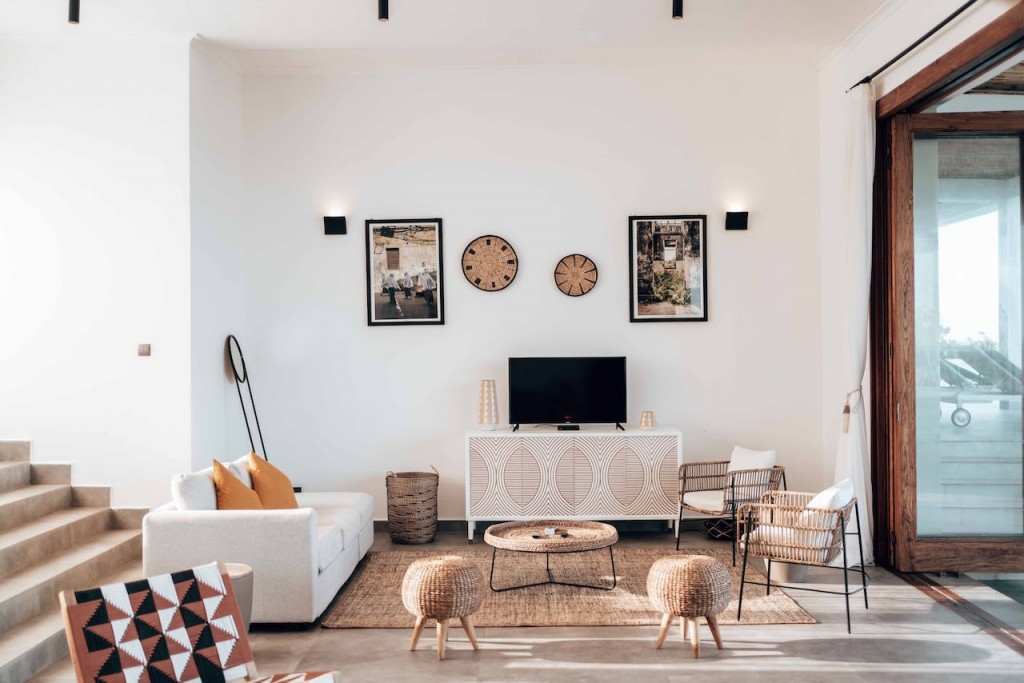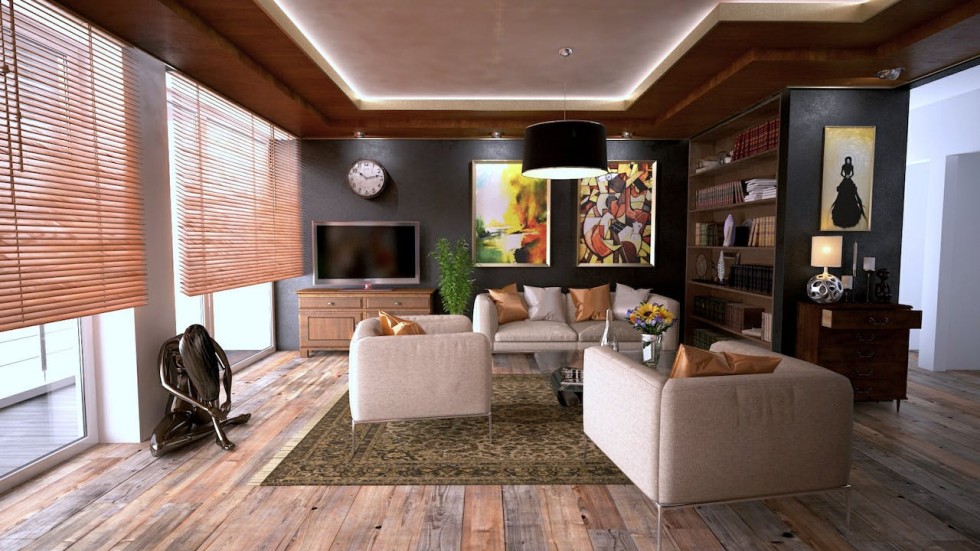Step into a world where furniture becomes a gateway to culture and tradition.
As you embark on this global journey, you’ll encounter:
- Japanese Tatami
- Indian Jhoola
- African Adinkra Stools
- Mexican Equipal Chairs
- Indonesian Batik Lined Chairs
- Middle Eastern Mashrabiya Screens
From the comfort of your home, let us take you on an adventure filled with style, history, and the delightful quirks that make furniture an expression of cultural richness. Keep reading below.
Furniture and Culture: A Global Perspective
Japanese Tatami
Did you know Japanese Tatami mats are still widely used in Japanese homes today? These unique mats made of rice straw hold a special place in Japanese culture. The use of Tatami mats can be traced back to ancient times when they were exclusively used by the nobility.
However, over time, Tatami mats became more accessible to the general public and are now found in homes across Japan. Tatami mats serve multiple purposes in homes. They not only provide a comfortable and soft surface to sit or sleep on but also help regulate the temperature in a room. The size and arrangement of Tatami mats in a room often indicate the social status or importance of the individuals using the space.
For example, in a traditional Japanese tea ceremony room, the arrangement of Tatami mats follows strict rules and signifies the hierarchy of participants.

African Adinkra Stools
Let’s talk about these amazing African Adinkra Stools. They are super cool because they have these awesome carvings and symbols called Adinkra symbols that represent Ghanaian traditions and beliefs. It’s not just about sitting on a stool; these pieces have a lot of cultural and spiritual meaning for the people of Ghana.
The stools are actually made from a single piece of wood, which is pretty impressive if you ask me. And get this: they are often passed down through generations and become treasured heirlooms in Ghanaian households. It’s like having a piece of history right in your home.
The surface is flat and wide, so you can easily throw on a cushion or rug to make it even cosier. So not only can you show off your Ghanaian piece, but you can also make sure your guests are sitting pretty.
Indian Jhoola
As you sway gently back and forth on an intricately carved Indian Jhoola, you can’t help but admire the skilled craftsmanship that went into creating this traditional swing. An Indian Jhoola is more than just a simple piece of furniture; it’s actually a vibrant testament to India’s deep and colourful cultural history.
Here are three fascinating facts about the Indian Jhoola that will surely pique your interest:
- Timeless Beauty: From delicate floral patterns to elaborate geometric motifs, these swings are a testament to the artistic prowess of Indian artisans. Each Jhoola tells a story through its intricate carvings.
- Symbol of Relaxation: In Indian culture, the Jhoola is more than just a swing. It’s a symbol of relaxation and leisure. From enjoying a cup of tea to reading a book, people often retreat to their Jhoola to unwind and find solace.
- Versatility at its Best: The Indian Jhoola isn’t limited to indoor use. Many people also place their swings in gardens or verandas, allowing them to enjoy the beauty of nature while gently swaying on their Jhoola.
Mexican Equipal Chairs
Let’s hit the road to Mexico and immerse ourselves in the captivating world of Mexican Equipal chairs. These bad boys are made from tanned pigskin and slender strips of wood.
You might be wondering: Why pigskin? Well, my friend, it’s all about durability and comfort. Can you imagine sitting on a chair made of pigskin? It’s like having a mini piggy hug every time you plop down!
Equipal chairs are primarily designed for outdoor seating, which makes them perfect for those sunny Mexican afternoons. Imagine sipping on a margarita, lounging on your Equipal chair, and watching the world go by.
Indonesian Batik Lined Chairs
You’ll love the intricate batik patterns that adorn Indonesian chairs, adding a touch of vibrant artistry to your seating arrangement. These chairs aren’t only functional but also a witness to the rich cultural heritage of Indonesia.
Here are three reasons why Indonesian Batik Lined Chairs are a must-have:
- Unmatched Aesthetic Appeal: The batik patterns on these chairs are a feast for the eyes. Whether you prefer traditional motifs or contemporary designs, Indonesian Batik Lined Chairs offer a wide range of options to suit your personal style.
- Cultural Significance: Batik is deeply rooted in Indonesian culture. It’s considered a form of art and has been passed down through generations. You aren’t only embracing Indonesian traditions but also preserving a cultural heritage that dates back centuries.
- Comfort and Durability: Indonesian Batik Lined Chairs are made from sturdy materials and feature ergonomic designs that ensure a comfortable seating experience. So, you can enjoy both flair and comfort without compromising on quality.
Middle Eastern Mashrabiya Screens
Okay, folks, now let’s dive into the mesmerizing world of Middle Eastern Mashrabiya Screens!
Picture this – you’re strolling through a bustling Middle Eastern city, the scorching sun beating down on you. Suddenly, you stumble upon a beautifully carved wooden window covering that instantly catches your eye.
These screens aren’t just a pretty face. In Middle Eastern societies, where privacy is highly valued, Mashrabiya screens have been a staple for centuries. Unlike a lot of conventional home furnishings, Mashrabiya screens can add a real sense of historic culture to a home as they can be traced back as far as the 1500s.
Frequently Asked Questions (FAQs)
What are the historical origins of the Japanese tatami?
It is believed that tatami mats have been used throughout Japanese history, dating back to Japan’s Nara period. Initially, tatami mats were used mainly by the nobility. Although it was still common for only the wealthy to be able to afford to cover entire rooms with tatami, it gradually became more common among the general population as well.
What is the significance of the Indian Jhoola in Indian homes?
Jhoolas, also known as Indian swings, are an essential part of Indian culture and are often seen as a nostalgic symbol of relaxation. Historically, Jhoolas were utilized as day beds either in gardens or as central living area furniture.
What are the different symbols and meanings associated with African adinkra stools?
African adinkra stools aren’t just pieces of furniture; they’re rich in symbols and meanings. One symbol commonly found on adinkra stools is the ‘Sankofa’ symbol, which serves as a reminder to learn from the past and carry forward the wisdom of ancestors. Another symbol is the ‘Gye Nyame’, which signifies the supremacy of God.

Furniture really is a part of our daily lives. These pieces of furniture marked with the culture they were made in, the materials they were made of, and how they were used by those who owned them is proof of that. It’s one of the reasons why some pieces of furniture are so valuable: they’re a glimpse into another time, another place.
Does your culture also have a rich heritage when it comes to furniture? If so, leave a comment below and let us know what it is.





